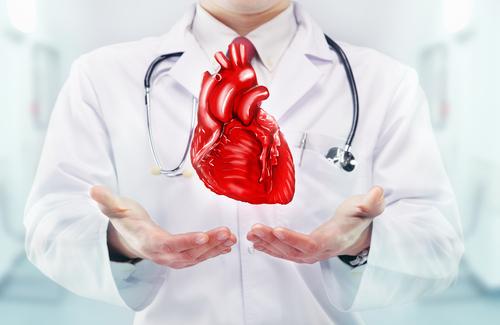
Acute pericarditis: causes, symptoms, diagnosis and treatment
Let’s learn more about pericarditis in its acute form: the pericardium is a protective saccular structure that surrounds the heart and consists of two distinct membranes (pericardial leaflets)
The parietal pericardium is the outer fibrous layer, while the inner layer, in contact with the myocardial surface, is the visceral pericardium.
The two leaflets are separated by 5-15 ml of clear fluid, produced by the visceral pericardium, which acts as a lubricant between the heart and surrounding structures.
When the pericardium becomes inflamed, it is called ‘pericarditis’.
Causes and risk factors of acute pericarditis
Acute pericarditis is caused by inflammation of the visceral and parietal pericardium.
This inflammation in turn can be caused by various causes, but in many cases the aetiology remains unknown.
Viral infections are the most common cause, and are believed to be responsible for many of the idiopathic cases.
Although less common, bacterial or tuberculous pericarditis can lead to life-threatening complications.
Inflammation of the pericardium following myocardial infarction (Dressler’s syndrome) is a less common clinical diagnosis in today’s era of revascularisation treatments using thrombolytic drugs and coronary angioplasty.
An exhaustive list of pathologies that can affect the pericardium is given below:
A) Microbiological causes
- Viruses (echovirus, coxsackievirus, adenovirus, cytomegalovirus, hepatitis B, infectious mononucleosis, HIV/AIDS)
- Bacteria (Pneumococcus, Staphylococcus, Streptococcus, Mycoplasma, Lyme disease, Hemophilus influenzae, Neisseria meningitidis)
- Mycobacteria (Pneumococcus, Staphylococcus, Streptococcus avium-intracellularis)
- Fungi (histoplasmosis, coccidioidomycosis)
- Protozoa.
B) Immunoinflammatory causes
- Connective tissue disease* (systemic Iupus erythematosus, rheumatoid arthritis, scleroderma, mixed)
- Arteritis (polyarteritis nodosa, temporal arteritis).
C) Iatrogenic causes
- procainamide,
- hydralazine,
- isoniazid,
- cyclosporine.
D) Oncological causes
Neoplastic diseases
- Primary: mesothelioma, fibrosarcoma, lipoma.
- Secondary: breast and lung carcinomas, lymphomas, leukaemias.
E) Surgical causes
- related to cardiac/thoracic surgery
- Related to device and surgical procedure
- Coronary angioplasty, implantable defibrillators, pacemakers.
F) Traumatic causes
- closed trauma
- penetrating trauma;
- post-cardiopulmonary resuscitation.
G) Congenital causes
- cysts;
- congenital absence.
H) Other causes
- Chronic renal failure, dialysis-related
- Immediately after myocardial infarction
- Some time after a myocardial infarction (Dressler’s syndrome), after cardiotomy or thoracotomy, after late trauma
- Hypothyroidism
- Amyloidosis
- Aortic dissection.
Symptoms, signs and diagnosis of acute pericarditis
The classic clinical manifestation of pericarditis is chest pain.
Since pain due to myocardial ischaemia or pulmonary embolism can also mimic that of pericarditis, making a differential diagnosis can sometimes be difficult.
Symptoms of pericarditis typically have a sudden onset, with stabbing pain related to the patient’s position; some relief occurs in a sitting, standing and forward-bending position.
On objective examination, the presence of pericardial rubbing indicates contact between the two inflamed pericardial leaflets.
Pericardial rubs produce a high-frequency, leather-like noise with three components that correspond to the movement of the heart during the cardiac cycle (ventricular systole, ventricular protodiastole and atrial contraction).
Since the frictions may be intermittent and of varying intensity, with only one or two audible components, serial cardiac examinations are required to detect them.
However, it is important to remember that not hearing a rubbing does not necessarily exclude the presence of pericarditis.
Electrocardiogram
During pericarditis, changes in the ECG (electrocardiogram) are commonly observed that evolve over time.
During the acute phase, diffuse ST-segment elevation and PR-segment elevation are the classic findings; they result from superficial inflammation of the heart.
The ECG pattern can be confused with the transmural ischaemia lesion current, which occurs in acute myocardial infarction.
However, multiple EGC leads are involved in pericarditis, and the presence of specular ST-segment underslicing in ischaemic conditions can help differentiate the two pathological entities.
Most ECG abnormalities resolve within a few days or weeks, although T-wave abnormalities may persist for longer.
Echography and chest X-ray
Echocardiographic findings and chest X-ray are normal in most cases of acute pericarditis unless it is complicated by pericardial effusion.
Acute pericarditis and laboratory medicine
Laboratory tests aimed at ruling out specific causes of pericarditis are tuberculin skin test, assessment of renal and thyroid function, anti-nuclear antibodies, complementemia, rheumatoid factor and serological test for Human Immunodeficiency Virus (HIV).
Elevated values of the erythrocyte sedimentation rate (ESR), C-reactive protein (CRP), or leucocyte count suggest inflammation in an active phase, but remain non-specific for the aetiological agent.
Virological studies have proven to be insensitive and generally insufficient to alter the therapeutic decision.
Cardiac enzymes may be elevated if there is concomitant myocardial involvement.
Treatment of acute pericarditis focuses on managing the underlying aetiology and alleviating pain
In most patients, non-steroidal anti-inflammatory drugs (NSAIDs) are effective in relieving chest pain and resolving pericardial inflammation.
An effective alternative may be oral colchicines (either alone or in combination with NSAIDs).
Glucocorticoid therapy should be reserved for pericarditis that is secondary to neoplasia or that does not respond to combination therapy because some studies indicate that early use of glucocorticoids may increase the risk of recurrence.
Although most cases are self-limiting and resolve without sequelae, relapsing episodes are not uncommon.
Moreover, complicated cases of pericarditis may result in cardiac tamponade, constrictive pericarditis and myocardial damage when the process evolves into myopericarditis.
Read Also:
Emergency Live Even More…Live: Download The New Free App Of Your Newspaper For IOS And Android
Myocarditis: Causes, Symptoms, Diagnosis And Treatment
Constrictive Pericarditis And Exudative Constrictive Pericarditis
Cardiomegaly: Symptoms, Congenital, Treatment, Diagnosis By X-Ray
Cardiac Tamponade: Symptoms, ECG, Paradoxical Pulse, Guidelines
‘D’ For Deads, ‘C’ For Cardioversion! – Defibrillation And Fibrillation In Paediatric Patients
Inflammations Of The Heart: What Are The Causes Of Pericarditis?
Do You Have Episodes Of Sudden Tachycardia? You May Suffer From Wolff-Parkinson-White Syndrome (WPW)
Knowing Thrombosis To Intervene On The Blood Clot
Patient Procedures: What Is External Electrical Cardioversion?
Increasing The Workforce Of EMS, Training Laypeople In Using AED
Difference Between Spontaneous, Electrical And Pharmacological Cardioversion
What Is A Cardioverter? Implantable Defibrillator Overview
Defibrillators: What Is The Right Position For AED Pads?
When To Use The Defibrillator? Let’s Discover The Shockable Rhythms



